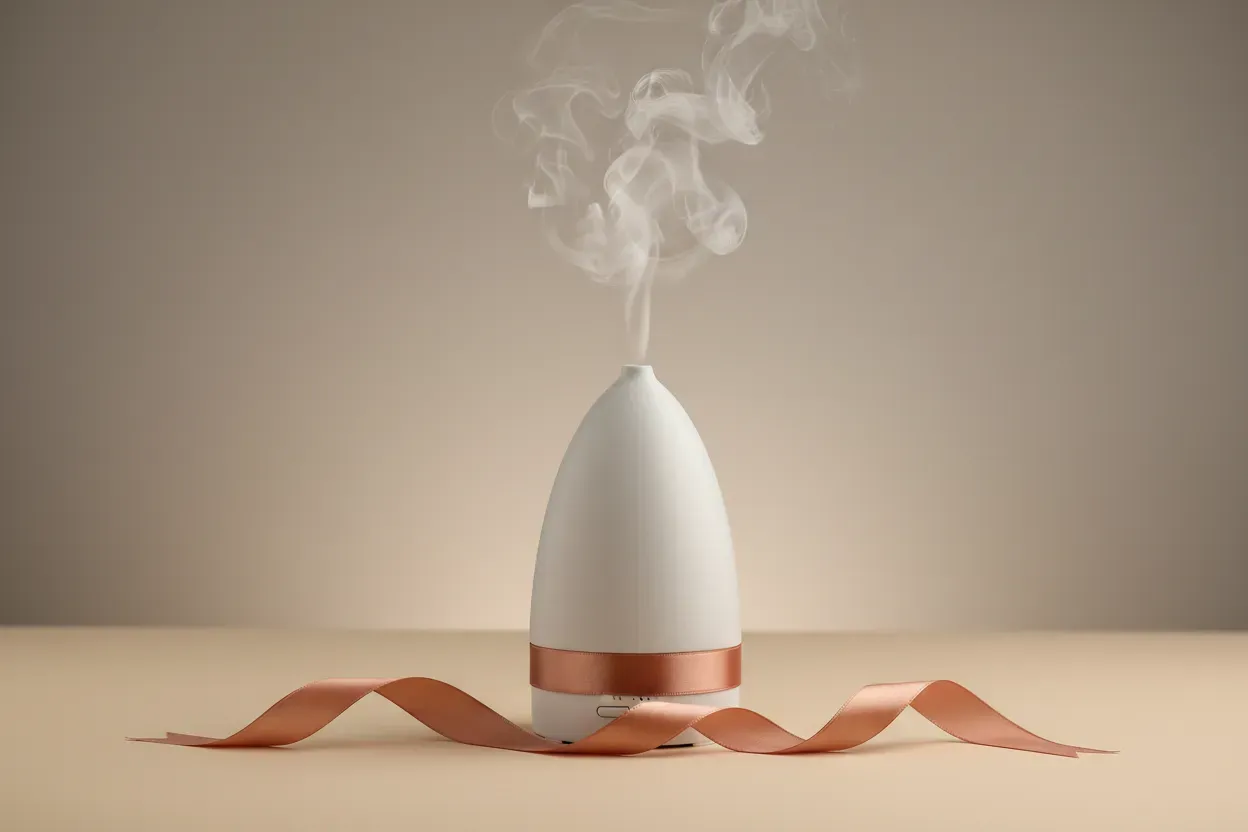Breaking the Ice with Humor: 14 Real-Life Examples
Humor can transform tense professional moments into opportunities for genuine connection, but knowing when and how to use it requires skill. This article explores real-life examples where professionals successfully used lighthearted remarks to break through awkwardness, build trust, and open doors that formal approaches couldn’t. Drawing on insights from experts in the field, these stories demonstrate practical techniques anyone can apply to create more authentic interactions.
- Survival Rate Joke Opened Patient Screening Dialogue
- Snack Comment Transformed Anxious Networking Encounter
- Shared Observations Invite Collaborative Human Moments
- Rubber Roach Remark Shifted Stressful Meeting
- Tech Joke Disarmed Hierarchy in Formal Pitch
- Coffee Observation Dissolved Rigid Negotiation Tension
- Exposed Shipping Label Failure to Secure Trust
- Fly Swatter Comment Eased Homeowner’s Frustration
- Admitted Drone Mistake to Establish Trust
- Meme Reply Switched Onboarding to Genuine Exchange
- Pitched With Levity to Build Real Connection
- Joked About Boots to Calm Scorpion Fears
- Mirror Wrap Suggestion Relaxed Nervous Vehicle Client
- Inbox Bermuda Triangle Message Revived Client Response
Survival Rate Joke Opened Patient Screening Dialogue
During a community health fair, a patient hesitated to approach the screening table, clearly unsure what to expect. Instead of beginning with formal introductions, I joked that the vision test was “painless and had a one-hundred percent survival rate.” The line drew a laugh, eased the tension, and opened the door for genuine conversation. What followed was not only a smooth screening but also an easy dialogue about her concerns that might have stayed hidden otherwise.
Humor worked because it shifted the atmosphere from clinical to human. It created a shared moment of lightness that made connection possible without forcing it. Used gently and respectfully, humor becomes more than entertainment—it becomes empathy expressed through laughter, reminding both people that care begins with comfort.

Snack Comment Transformed Anxious Networking Encounter
During a networking event, I met someone who looked as nervous as I felt. When we both reached for the same snack, I joked, “Well, at least we have similar taste in anxiety food.” That small comment made us both laugh and immediately eased the tension. The conversation flowed naturally after that—we talked about work, travel, and eventually collaborated on a community project months later. Humor worked because it made the moment human. It wasn’t forced or rehearsed; it showed vulnerability and warmth in an environment that often feels stiff. A little laughter can turn a polite introduction into a genuine connection.

Shared Observations Invite Collaborative Human Moments
People often think of humor as a high-risk tool for connection, something best left to the naturally witty. But I’ve found it’s less about telling a great joke and more about lowering the pressure in a room. When you first meet someone, especially in a professional setting, there’s an invisible barrier of formality. A small, well-placed moment of levity can signal that you’re approachable and not just a job title. It’s a quick way to move from a transactional mindset to a relational one, which is where real trust begins.
The key insight for me was realizing that the most effective humor isn’t a performance; it’s a shared observation. Trying to land a pre-rehearsed joke puts the other person on the spot—they feel obligated to laugh. But pointing out a small, slightly absurd detail in your shared environment is an invitation. It says, “Are you seeing what I’m seeing?” This shifts the dynamic from you trying to be funny *at* them to both of you sharing a brief, human moment *together*. It’s collaborative, not a solo act.
I remember a first meeting with a very senior leader I was a bit intimidated by. We were in a massive, sterile boardroom, and the automatic blinds started slowly, noisily, and erratically going up and down on their own. After a few awkward seconds of silence, I just smiled and said, “I think the building is having an emotional day.” He let out a genuine laugh, and the entire feeling in the room changed. We went from a rigid, formal meeting to just two people talking. It showed me that the best humor isn’t about a punchline; it’s about noticing the little cracks in the professional facade where our shared humanity shines through.

Rubber Roach Remark Shifted Stressful Meeting
A few years ago, I was meeting a new commercial client who was clearly stressed—they’d had a bad experience with another pest company, and you could feel the tension in the room. When I sat down, I noticed a giant rubber roach sitting on the conference table. Without missing a beat, I said, “Wow, you guys really go all out on visuals, huh?” Everyone laughed, and the tone immediately shifted.
That quick moment of humor reminded them I wasn’t there to give a hard sales pitch—I was there to help. It broke down the wall and turned what could’ve been a stiff meeting into an easy conversation. Ever since then, I’ve learned that a little well-timed humor, especially in stressful situations, makes people more open and builds trust faster than any formal introduction ever could.

Tech Joke Disarmed Hierarchy in Formal Pitch
During a partnership meeting with a potential funder, the atmosphere felt tense—everyone was cautious, formal, and clearly overprepared. When the projector refused to connect, I joked, “Looks like even the tech wants us to start with transparency.” The room broke into laughter, and the mood immediately shifted from guarded to conversational. What began as a rigid pitch turned into an honest discussion about shared frustrations with bureaucracy in the grant process.
That moment reminded me that humor isn’t about entertainment—it’s about disarming hierarchy. It resets the tone so both sides can speak like people rather than representatives. Once the tension lifted, genuine collaboration followed, and the meeting ended with a signed memorandum of understanding. In professional settings, the right humor doesn’t dilute credibility; it builds the human trust that makes progress possible.

Coffee Observation Dissolved Rigid Negotiation Tension
One moment comes to mind because it reminded me that sometimes the smallest bit of levity can change the entire tone of a conversation.
A few years ago, I was meeting a potential partner whose reputation for being direct — almost aggressively so — had preceded him. I walked into the room expecting a tough negotiation, and the energy confirmed it. He was polite, but stiff, guarded in a way that told me he was already bracing for a pitch.
As we sat down, I noticed he had three different coffees lined up on the table. Without thinking too hard, I said, “You know, I prepare the same way before talking to my finance team.” He paused, looked at the cups, and just started laughing. It wasn’t a big joke — more of an honest observation — but it disarmed us both. The tension dropped instantly. He admitted he’d been up all night working on a deadline and was using caffeine to stay functional. That opened the door to a conversation that was human before it was professional.
From there, everything shifted. Instead of a rigid back-and-forth, we ended up talking about burnout, early-stage chaos, and how we were both trying to build systems that reduced that kind of pressure for our teams. By the time we actually discussed the partnership itself, we weren’t two strangers on opposite sides of a negotiation — we were peers trying to solve similar problems.
What I’ve learned is that humor isn’t about being clever. It’s about showing that you’re paying attention, that you’re willing to meet someone as a person, not just a title. In this case, that tiny moment of shared humanity broke down the formality and allowed a real connection to form. And that connection ended up being far more valuable than anything on the agenda.
Exposed Shipping Label Failure to Secure Trust
Using humor to break the ice and connect with someone new is the operational equivalent of using a shared, absurd reality to establish initial, high-stakes trust. You build rapport by acknowledging the mutually ridiculous difficulties inherent in the heavy-duty trucks trade.
The situation was a major, initial procurement meeting with the CEO of a specialized OEM Cummins parts supplier—a notoriously formal and intimidating figure. I needed to establish immediate trust to discuss a complex, multi-million-dollar purchasing agreement for turbocharger assemblies. Instead of starting with financial spreadsheets, I used a shared operational failure.
My approach was to immediately pivot the small talk to the universal, high-stakes trade frustration. I opened the meeting not with a greeting, but with a simple, direct statement: “Before we start, I need to know: which of your fulfillment managers still thinks a handwritten label is a valid part number? Because I’m still paying the freight costs to fix their last mistake.”
This use of humor instantly broke the ice and helped connect with the CEO because it demonstrated that I understood the deepest, most expensive pain point of his operation. His laughter was a recognition of a shared, verifiable, and highly specific technical failure that transcends corporate hierarchy. This simple, shared admission of operational reality immediately established a powerful foundation of trust and technical competence, allowing us to pivot to the complex, non-abstract financial discussion. The ultimate lesson is: You secure high-stakes relationships by using humor to point out the single, non-negotiable operational truth that everyone in the trade knows but usually avoids discussing.

Fly Swatter Comment Eased Homeowner’s Frustration
One that sticks with me happened years ago during a home inspection for a new client. The homeowner met me at the door, holding a fly swatter like a sword—clearly frustrated. Instead of jumping straight into business, I laughed and said, “Looks like you’ve already got the situation under control. Should I just head out?” It caught her off guard, and she burst out laughing. The tension disappeared instantly.
From there, the conversation flowed easily, and by the end of the visit, she signed up for a service plan. That moment reminded me how far a little humor can go when people are stressed or skeptical. It doesn’t have to be a joke—just something that shows you’re human and approachable. In pest control, and really any line of work, that genuine connection makes all the difference.

Admitted Drone Mistake to Establish Trust
Using humor to break the ice requires admitting a minor, relatable structural failure in a high-stakes situation. The situation was meeting a high-profile commercial property manager who was notoriously cold and resistant to new vendors. Our initial conversation was a structural failure—all business, no rapport. The conflict was the trade-off: maintaining sterile professionalism versus risking a joke to secure a genuine connection.
The humor I used was a hands-on relatable failure story. I pivoted the conversation from my company’s credentials to a quick, self-deprecating story about a rookie mistake: “The first time I set up our drone for an inspection, I forgot to check the GPS lock and nearly had a five-thousand-dollar piece of equipment try to fly itself to Dallas. I realized the machine is only as smart as the guy holding the controller.” I paused, then added, “It was a good lesson: always secure your structural base first.”
This helped because it immediately exposed my humanity and competence simultaneously. Admitting a minor, controlled failure showed I value accountability and had learned a verifiable, hands-on lesson, which is exactly what a property manager values. It allowed the manager to drop his guard and respond with his own story of a logistical failure, instantly creating a shared structural bond of professional experience. The best way to break the ice is to be a person who is committed to a simple, hands-on solution that uses self-deprecating humor to quickly establish trust and competence.
Meme Reply Switched Onboarding to Genuine Exchange
If you’ve ever onboarded in a remote-first company, then you probably know how crazy it can be when you’re rapid-fire introduced to dozens of new teammates through Slack. It honestly kind of feels like speed dating via emoji, and I feel that responding with the same old “excited to be here” message loses its charm after a bit, so I was particularly tickled when a new joiner started replying with a meme about drowning in notifications. This really broke the ice and switched the dynamic from stilted corporate messaging to something much more real when people responded with GIFs, jokes, and quick intros that led to real conversations later. Humor is one of my favorite tools for connection because it disarms formality and creates shared energy!

Pitched With Levity to Build Real Connection
When I first pitched the idea for What Kind of Bug Is This to a potential partner, I opened with: “We help people sleep at night—by telling them that bug in their bathroom probably isn’t a threat to humanity.” It got a laugh, and more importantly, it set the tone. Instead of a stiff business call, it turned into a real conversation about fear, curiosity, and the weird relationship people have with pests.
Humor helped bridge the gap between “this is a business idea” and “this actually helps people in a human way.” That little moment of levity made the conversation more honest—and in the end, that partner came on board.

Joked About Boots to Calm Scorpion Fears
One time, I was meeting a new client who had just moved to Arizona and was nervous about scorpions. When I walked in, she joked that she’d been sleeping in hiking boots just in case one showed up. I told her, “That’s one way to do it—though most of my customers prefer a good night’s sleep.” She cracked up, and from that point on, the whole visit felt easier.
Humor helped turn what could’ve been an anxious conversation into a friendly one. It’s a simple way to show people you understand their worries without making light of them. In this line of work, a quick laugh builds trust faster than any sales pitch ever could.

Mirror Wrap Suggestion Relaxed Nervous Vehicle Client
A time I used humor to break the ice was during a meeting with a new client who seemed nervous about wrapping their company vehicles. As we walked around their truck, I joked that we could always start by wrapping just the mirrors to “test the waters.” That small comment made them laugh and instantly relaxed the mood. From there, the conversation flowed naturally, and they opened up about their vision and ideas. Using humor in that moment helped build trust and showed that while we take our work seriously, we keep the process enjoyable and approachable too.

Inbox Bermuda Triangle Message Revived Client Response
Humor has become one of my favorite tools for building genuine connections — especially in business contexts that can otherwise feel transactional. One example that stands out is how my team and I use light, witty follow-ups when clients go quiet during negotiations or project discussions. Instead of sending another formal reminder, we might say something like, “Just checking if our last message got lost in the Bermuda Triangle of your inbox.”
It’s a small gesture, but it often transforms the tone of the exchange. People respond to warmth and relatability — and in our case, about seven out of ten clients reply right after these friendly nudges. Humor helps remind everyone that we’re people first, professionals second.
At Tinkogroup, where we handle data annotation and processing for global clients, that human touch is often what turns a delayed response into a long-term partnership.







